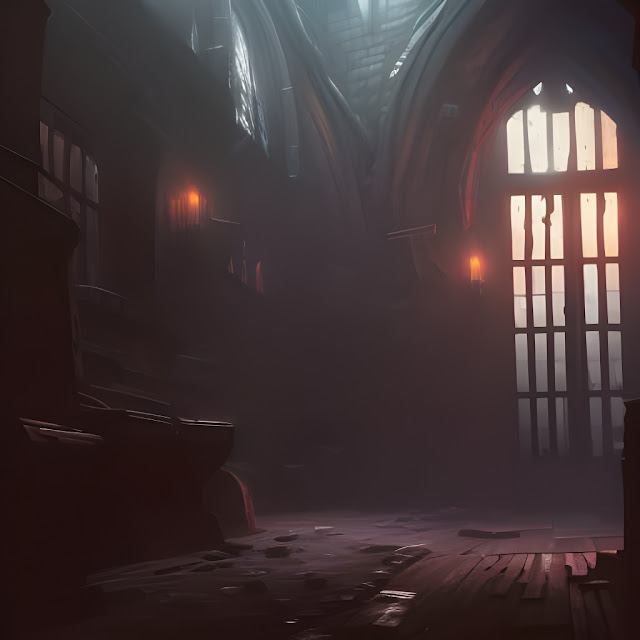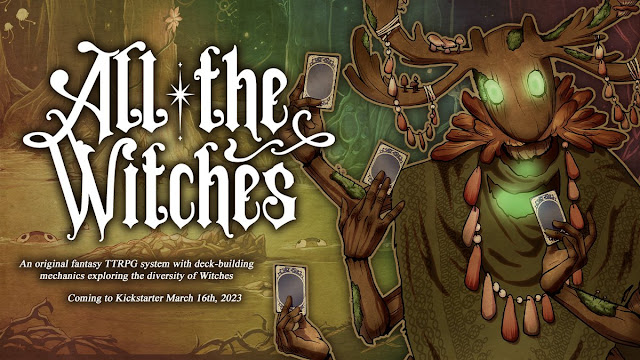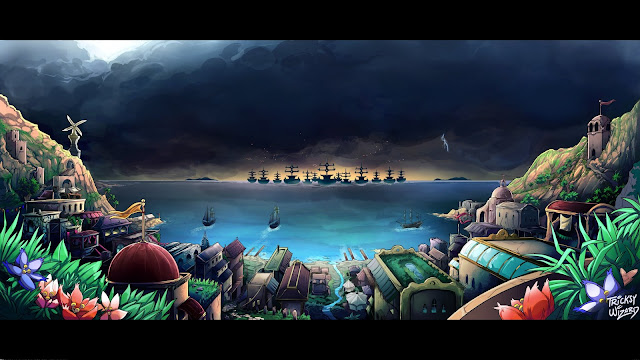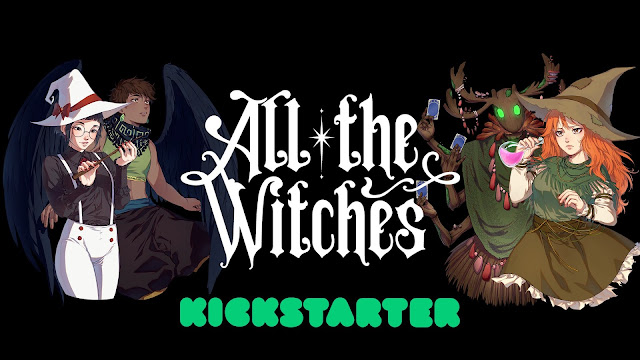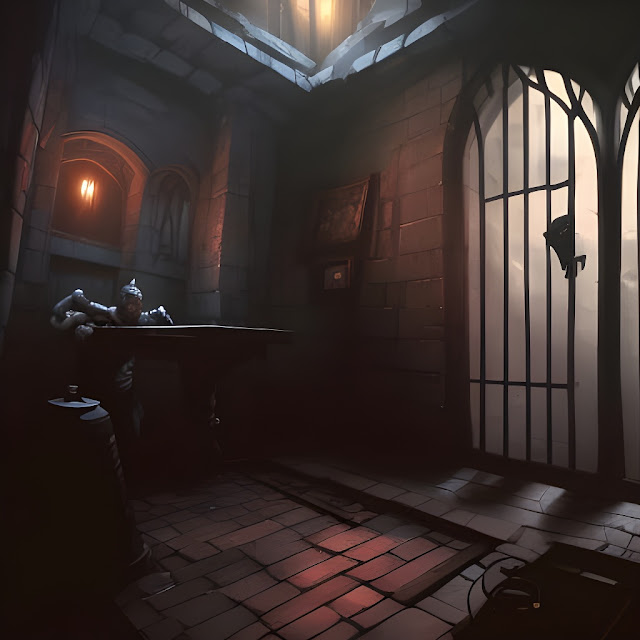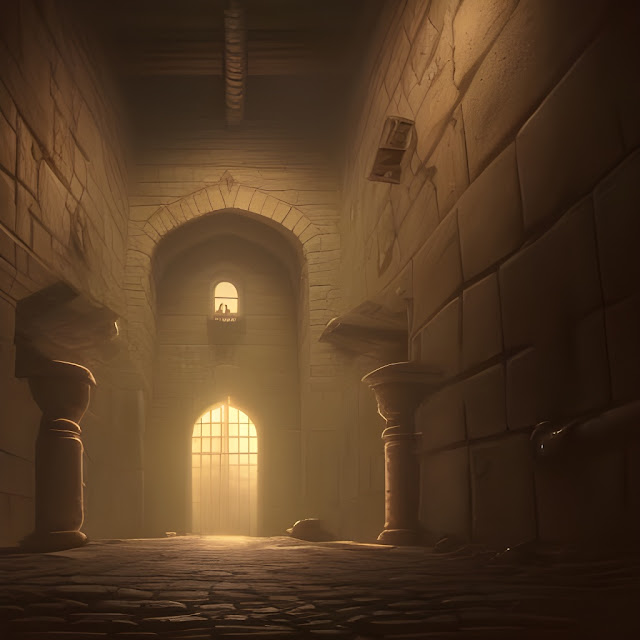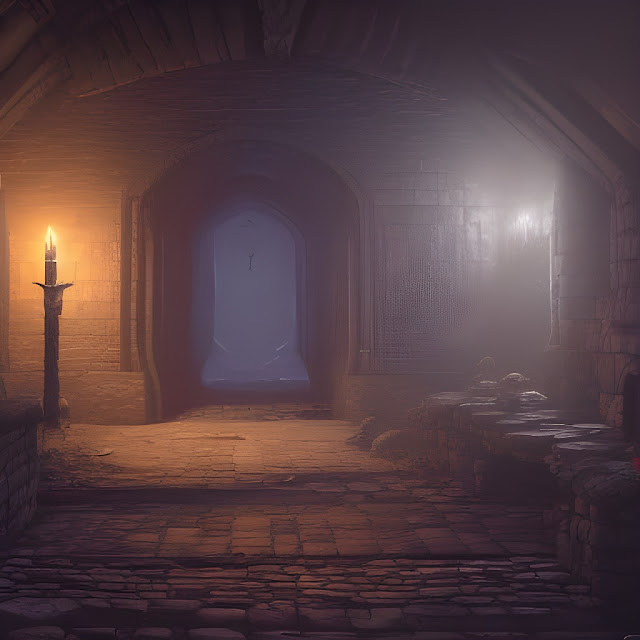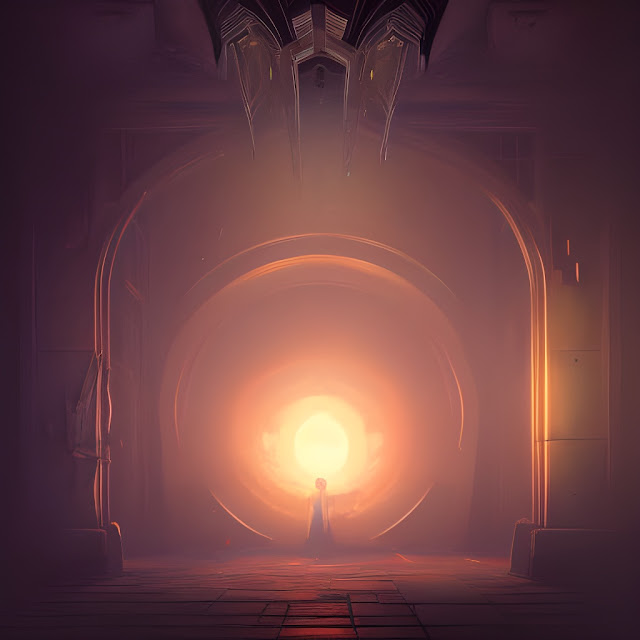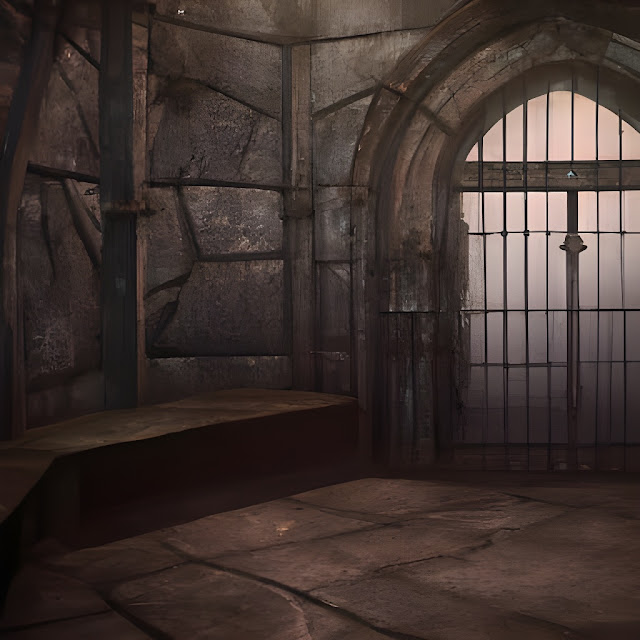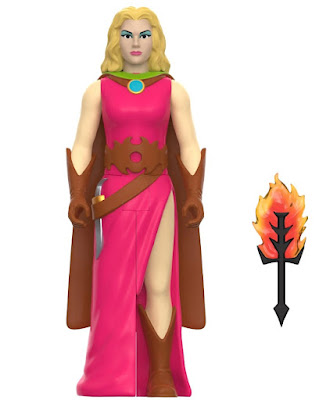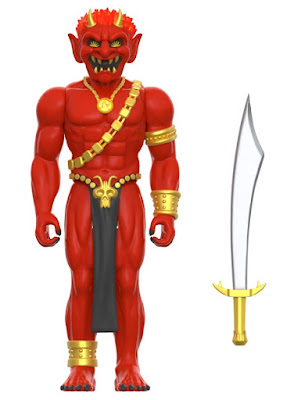Pocket Sized Perils #2
 For every Ptolus: City by the Spire or Zweihander: Grim & Perilous Roleplaying or World’s Largest Dungeon or Invisible Sun—the desire to make the biggest or most compressive roleplaying game, campaign, or adventure, there is the opposite desire—to make the smallest roleplaying game or adventure. Reindeer Games’ TWERPS (The World's Easiest Role-Playing System) is perhaps one of the earliest examples of this, but more recent examples might include the Micro Chapbook series or the Tiny D6 series. Yet even these are not small enough and there is the drive to make roleplaying games smaller, often in order to answer the question, “Can I fit a roleplaying game on a postcard?” or “Can I fit a roleplaying game on a business card?” And just as with roleplaying games, this ever-shrinking format has been used for scenarios as well, to see just how much adventure can be packed into as little space as possible. Recent examples of these include The Isle of Glaslyn, The God With No Name, and Bastard King of Thraxford Castle, all published by Leyline Press.
For every Ptolus: City by the Spire or Zweihander: Grim & Perilous Roleplaying or World’s Largest Dungeon or Invisible Sun—the desire to make the biggest or most compressive roleplaying game, campaign, or adventure, there is the opposite desire—to make the smallest roleplaying game or adventure. Reindeer Games’ TWERPS (The World's Easiest Role-Playing System) is perhaps one of the earliest examples of this, but more recent examples might include the Micro Chapbook series or the Tiny D6 series. Yet even these are not small enough and there is the drive to make roleplaying games smaller, often in order to answer the question, “Can I fit a roleplaying game on a postcard?” or “Can I fit a roleplaying game on a business card?” And just as with roleplaying games, this ever-shrinking format has been used for scenarios as well, to see just how much adventure can be packed into as little space as possible. Recent examples of these include The Isle of Glaslyn, The God With No Name, and Bastard King of Thraxford Castle, all published by Leyline Press.The Pocket Sized Perils series uses the same A4 sheet folded down to A6 as the titles from Leyline Press, or rather the titles from Leyline Press use the same A4 sheet folded down to A6 sheet as Pocket Sized Perils series. Funded via a Kickstarter campaign as part of the inaugural ZineQuest—although it debatable whether the one sheet of paper folded down counts as an actual fanzine—this is a series of six mini-scenarios designed for use with Dungeons & Dragons, Fifth Edition, but actually rules light enough to be used with any retroclone, whether that is the Dungeon Crawl Classics Roleplaying Game or Old School Essentials. Just because it says ‘5e’ on the cover, do not let that dissuade you from taking a look at this series and see whether individual entries can be added to your game. The mechanics are kept to a minimum, the emphasis is on the Player Characters and their decisions, and the actual adventures are fully drawn and sketched out rather than being all text and maps.
The Beast of Bleakmarsh is the second entry in the Pocket Sized Perils series following on from An Ambush in Avenwood. Designed for Second Level Player Characters, the scenario is more complex than An Ambush in Avenwood, involving a mystery to investigate, things most foul to reveal, and monsters to hunt. It can be played through in a single session, but might take a little longer as the Player Characters follow the clues across an area of marshland. The beginning of the scenario sets the Player Characters up as monster hunters who have been asked by their friend Godric to travel to the village of Bleakmarsh which is being plagued by a mysterious beast. As they make their way towards the ferry station, they hear cries for help coming from the marsh. When the Player Characters investigate the source, they find a women imperiled by a swarm of frenzied swamp beasts. After they have rescued her, the Player Characters will learn that she is a bard, travelling with her band to perform in the village of Bleakmarsh. Unfortunately, the frenzied swamp beasts have eaten her bandmates and their horses, so asks the Player Characters if they will escort her to her destination. As thanks, she offers to split the takings from her performance that night.
When they arrive, the Player Characters have the opportunity to learn more about the so-called ‘Beast of Bleakmarsh’ as well as other gossip, and also discover that their friend Godric has disappeared! With Bleakmarsh as their base, they can then begin their investigations into the locations of both the beast and their friend. Of course, the Player Characters do not have follow this path exactly. The Player Characters could simply be passing by, on their way to another destination, when they hear the cries of the bard emanating from the marsh, though the Game Master will need to make Godric important to the Player Characters in some other way. Instead of being asked by Godric, the Player Characters could alternatively have been asked by the authorities to deal with the beast threatening the village. In this way, the scenario can be be run as short sidequest. Whichever way the Dungeon Master decides to use The Beast of Bleakmarsh, it is easy to add to an ongoing game.
The mystery at the heart of The Beast of Bleakmarsh unfolds at the same time and pace as the Dungeon Master literally unfolds the scenario. The initial three double-page spreads provide and illustrate the scenario’s set-up and opening encounter, then the village of Bleakmarsh and its inhabitants and gossip, and lastly, an explanation of what is going on. Which is not quite as simple as there being a beast threatening the village—the threat comes from within rather them without. There is a list of clues and items to be found which may help the Player Characters, but the adventure literally opens up when the Game Master pulls The Beast of Bleakmarsh apart to reveal a map of the area with its important locations marked. Pull the map apart and the location of the scenario’s final confrontation and the details of those responsible for the disappearances.
The openness of the scenario means that The Beast of Bleakmarsh is slightly more difficult to run than the previous An Ambush in Avenwood. It is not as heavily plotted and is primarily player and Player Character-led as they follow up on the clues littered across the landscape and the scenario. One potential issue is that the Player Characters will weapons that either silvered or magical and it is unlikely that all of the Player Characters will have them. Fortunately, the scenario includes a means of solving this issue—if the Player Characters can find it. If they cannot, then the final confrontation with the real danger threatening the village will be very short indeed.
The Beast of Bleakmarsh has the feel of a bigger scenario parred down to fit a smaller page. In some ways it is more of detailed outline than a full detailed adventure, and the Dungeon Master may want to add a few NPCs for the Player Characters to interact with in Bleakmarsh and probably prepare some notes as the scenario cannot really be run just from the main map. Of course, the Dungeon Master will have to flip back and forth just as in other scenarios, but here there is some page folding too. And that makes running The Beast of Bleakmarsh just that much more fiddley than a standard scenario.
Physically, The Beast of Bleakmarsh is very nicely presented, being more drawn than actually written. It has a cartoonish sensibility to it which partially obscures the degree of peril to be found within the reaches of the marsh. There is a sense of humour too in the details of the drawings, obviously more for the benefit of the Dungeon Master than her players. The combination of having been drawn and the cartoonish artwork with the high quality of the paper stock also gives The Beast of Bleakmarsh a physical feel which feels genuinely good in the hand. Its small size means that it is very easy to transport.
The Beast of Bleakmarsh presents a simple little mystery at the heart of the marsh, with a limited trail of clues which lead to a dangerous confrontation with the villains threatening the villagers of Bleakmarsh. It has a slightly humorous, if no less grim—and slightly Lovecraftian—tone which the Dungeon Master is free to ignore or emphasise as is her wont. At its most basic, The Beast of Bleakmarsh is easy to prepare, but the Dungeon Master will probably want to spend a little more time developing it in places, especially if she wants to play up the horror and sense of bleak isolation which the scenario suggests, but does not really give itself the room to really present. The Beast of Bleakmarsh has the same charming physicality of the other entries in the Pocket Sized Perils series, but will need more effort—though not too much effort—than those others to get the fullest out of the scenario.
